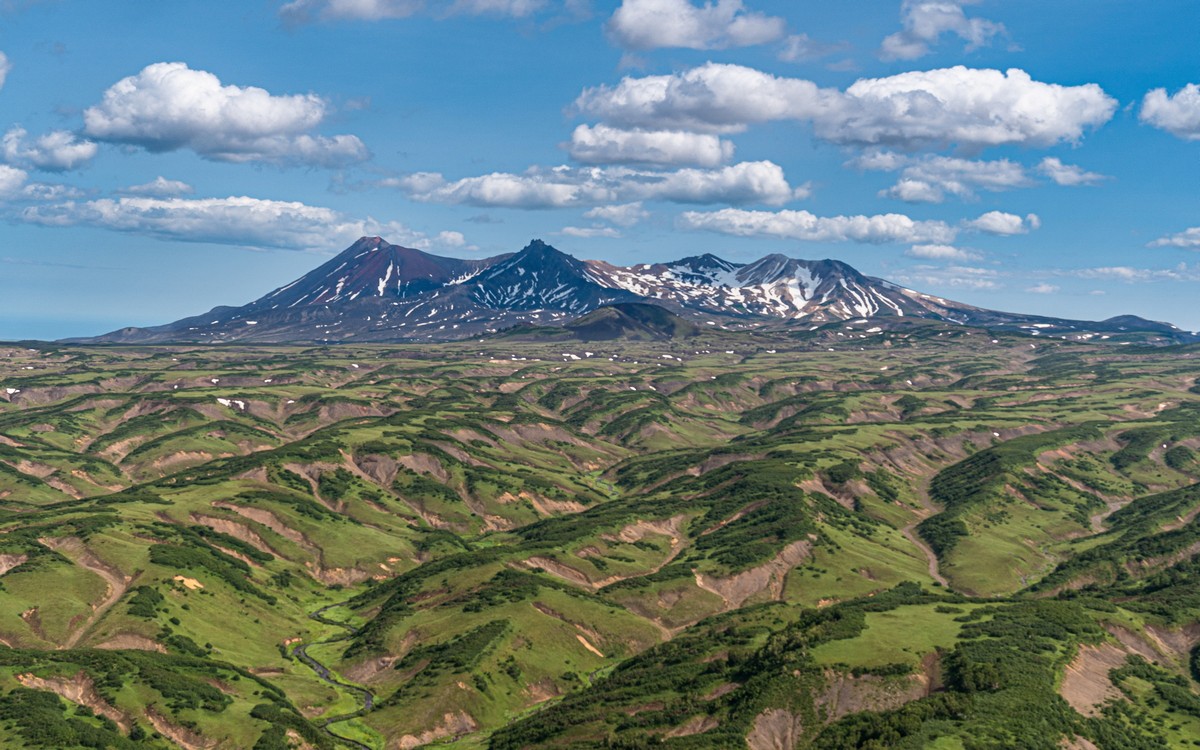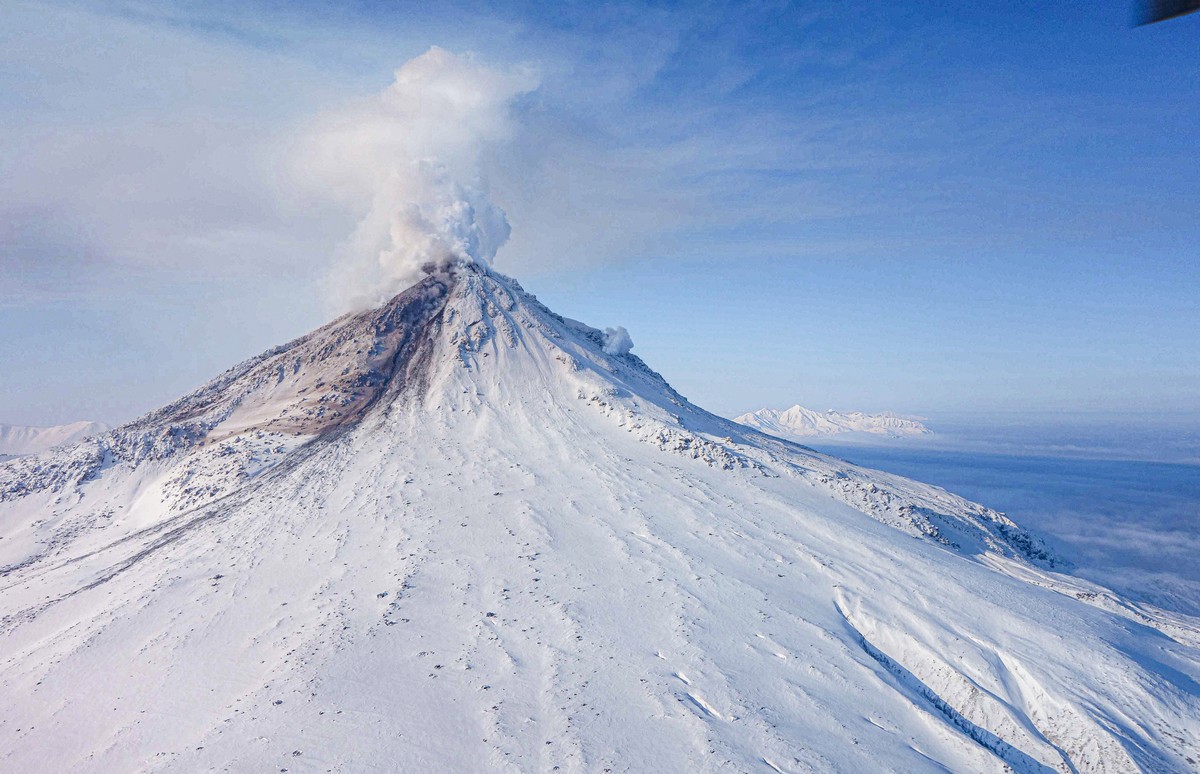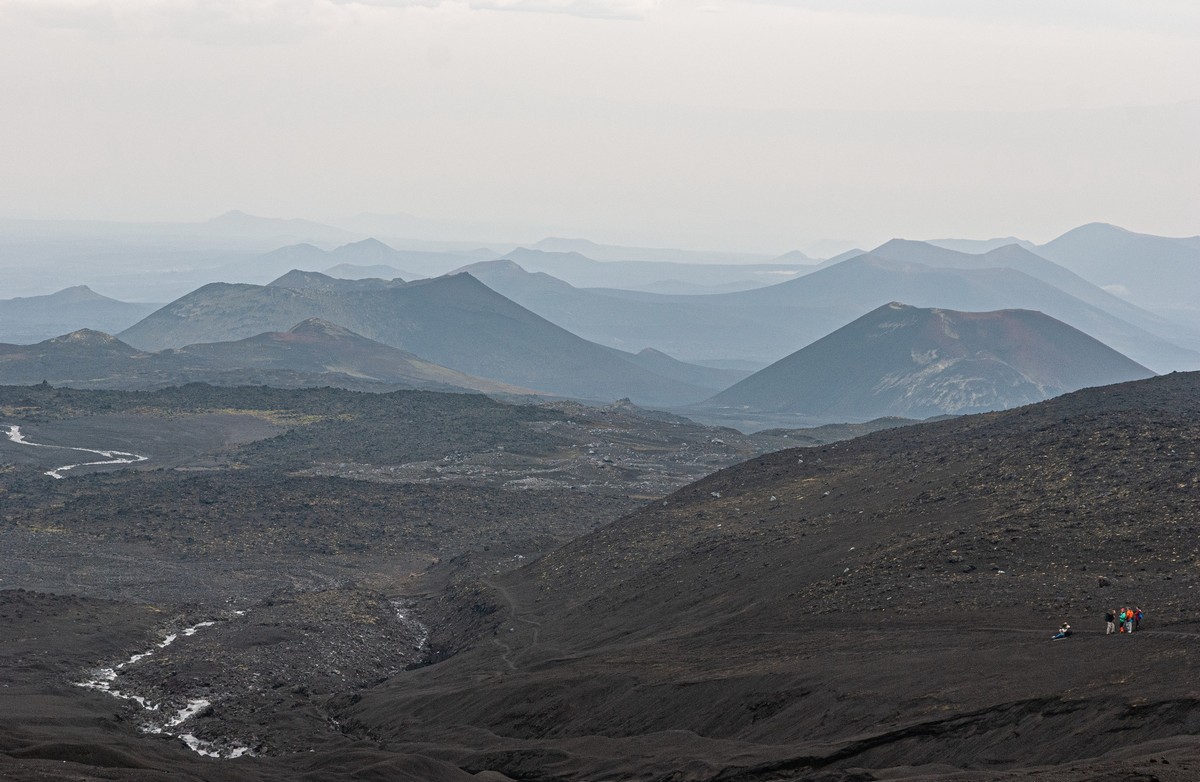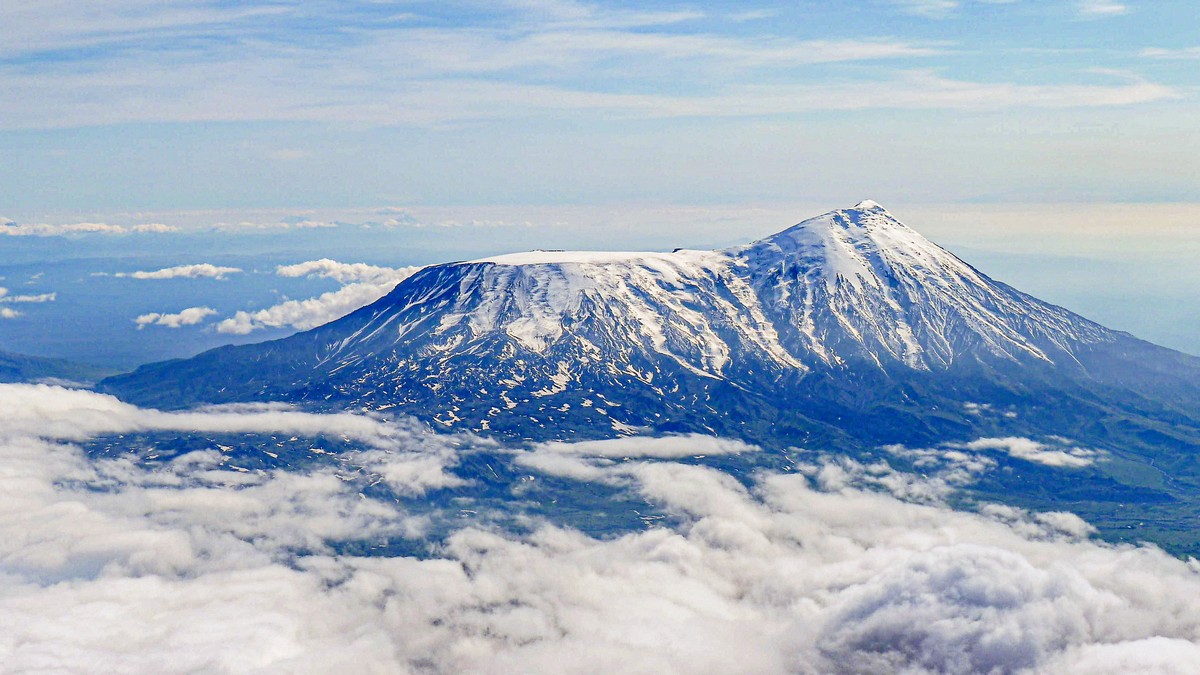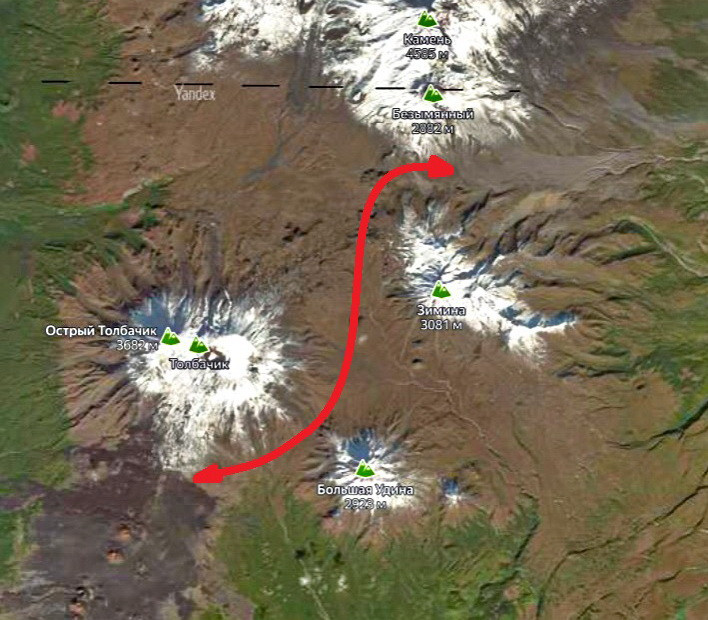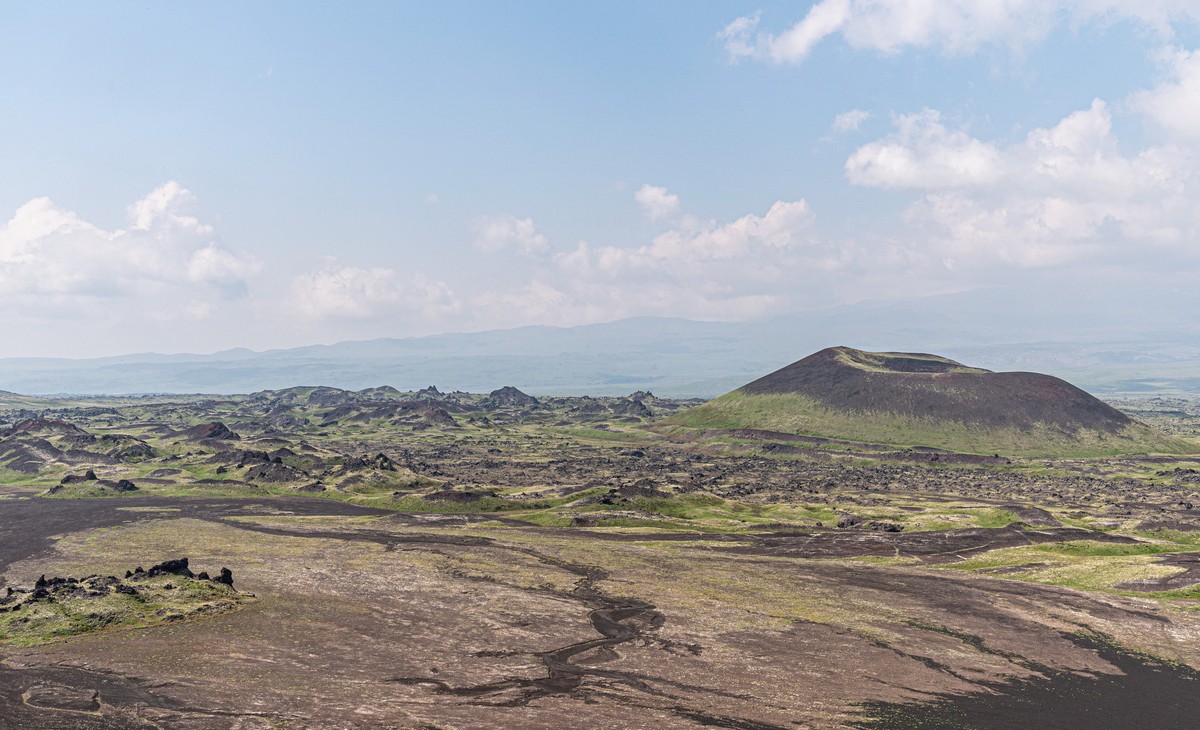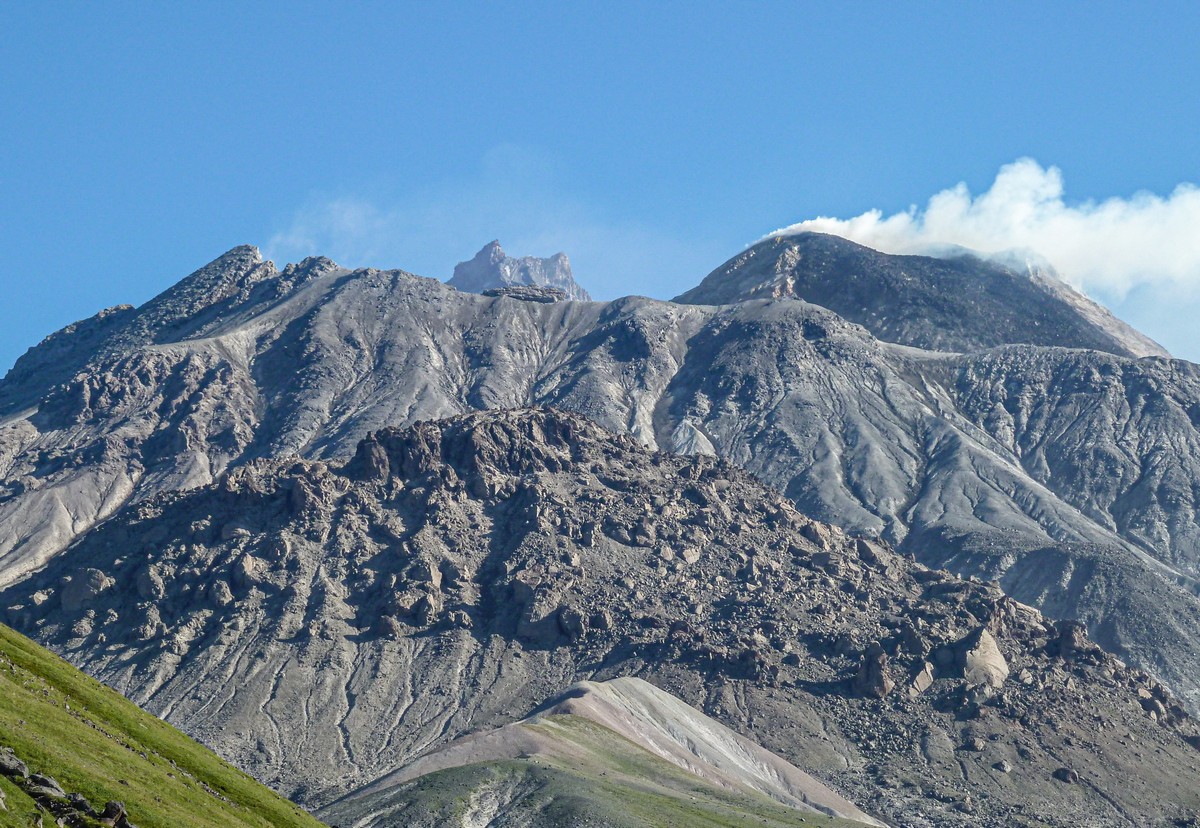December 13, 2021
“The city’s” disappearing volcanoes.
I’ve already told you what a Kamchatkan mirage is, haven’t I? Briefly, again: it’s when a whole volcano can simply disappear. Oh yes. “But surely you mean just the peak of a volcano can ‘disappear’, say – in some mist or fog or in some low cloud, right?” some of you may understandably ask. Actually – no. Whole volcanoes. Whole, gigantic volcanoes! Like, these, for example, next to… ‘the city’:
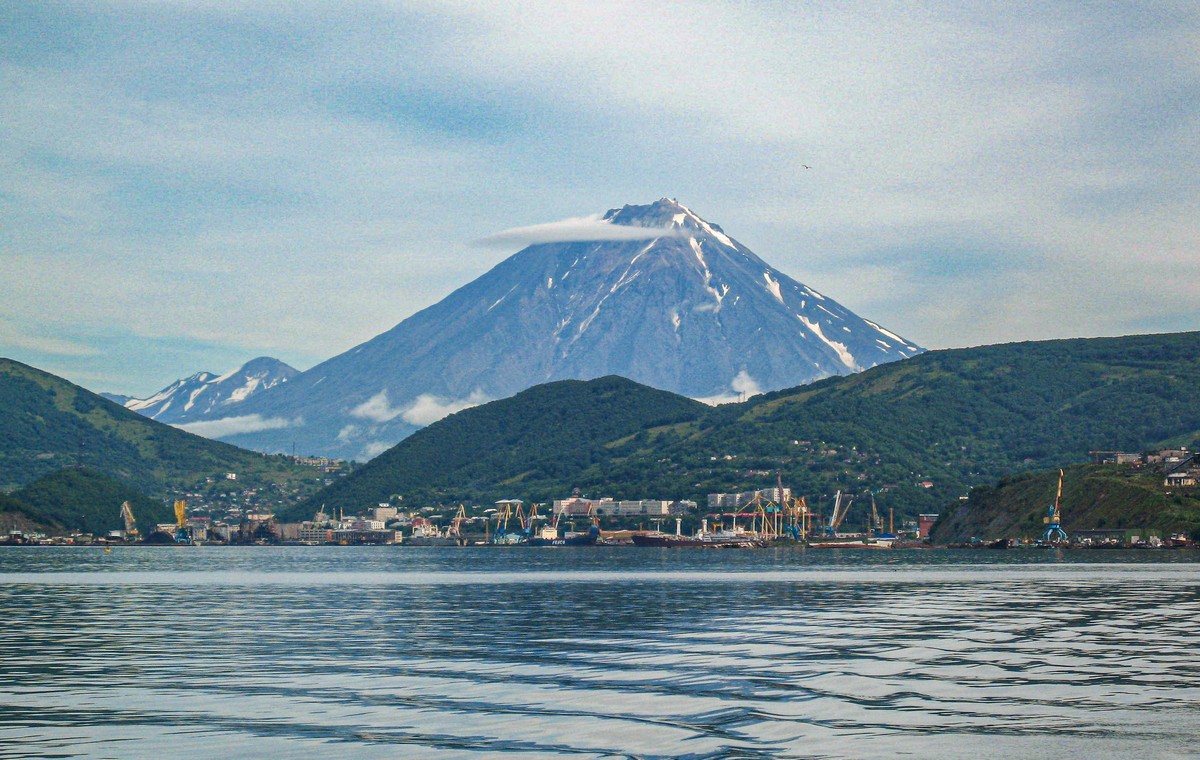
“Which city is that?” you may also ask…
‘The city’ is in fact Petropavlovsk-Kamchatsky – which used to be the only city in Kamchatka. All other settlements on the peninsula are smaller than city-size: like towns (today there are a further two: Yelizovo and Vilyuchinsk), villages, or even smaller. Since Petropavlovsk-Kamchatsky was long the only city, it was – and still is, out of habit – referred to by all locals as simply ‘the city’: you never hear its full name uttered. So you hear things like: “I’m in the city”, or “I’ll meet you in the city”, or “there was a bear roaming the city this morning”! :)




